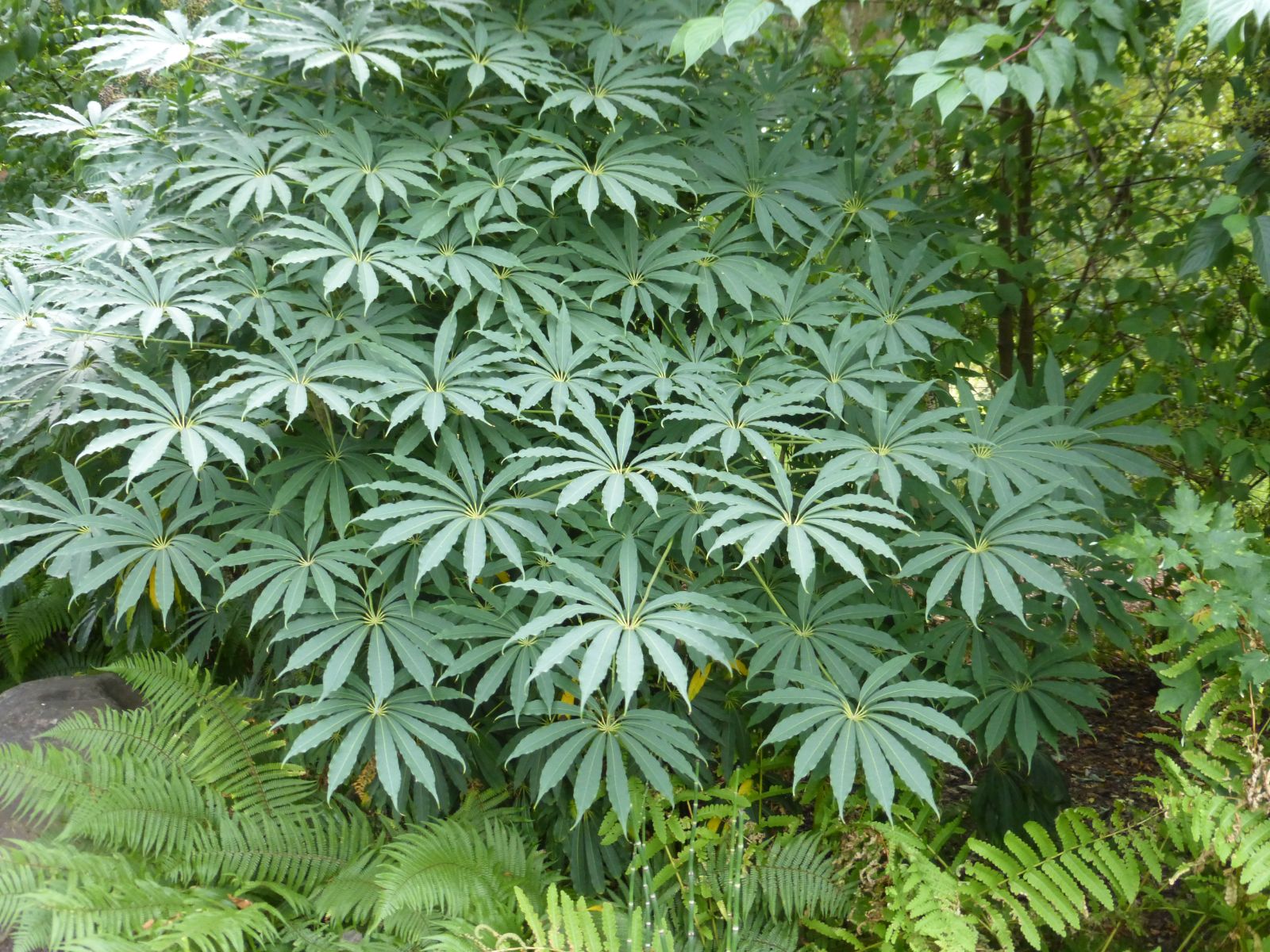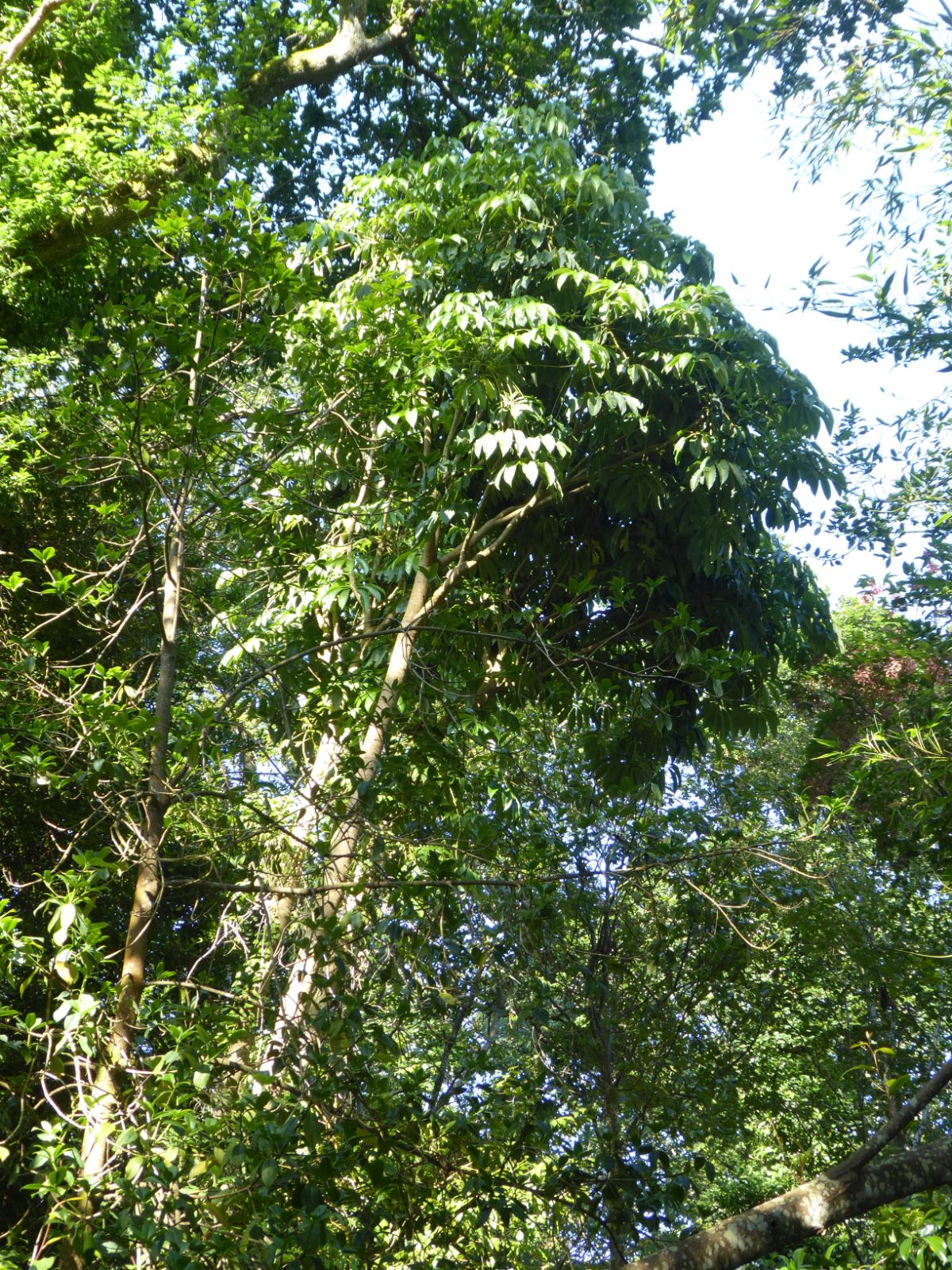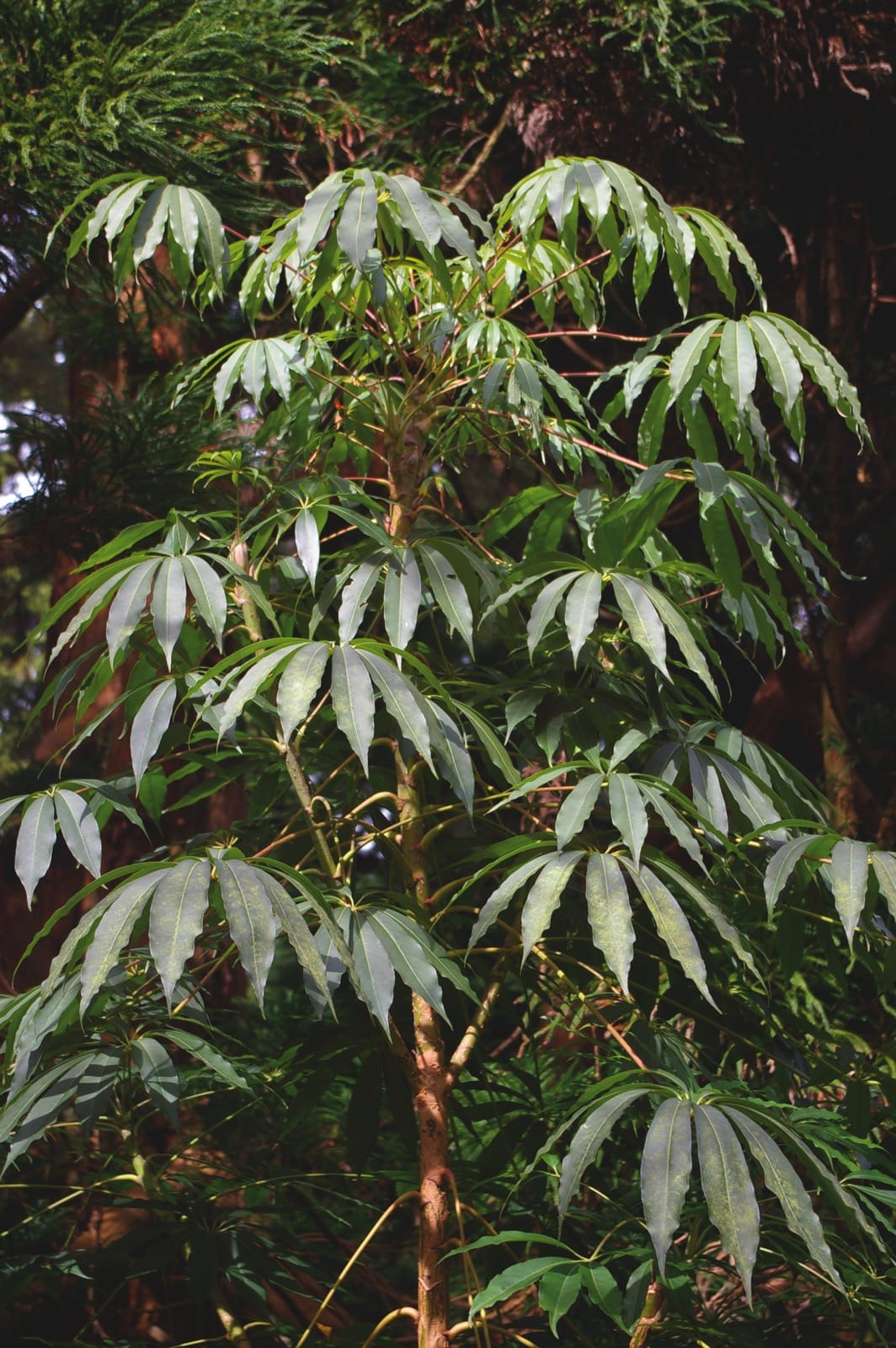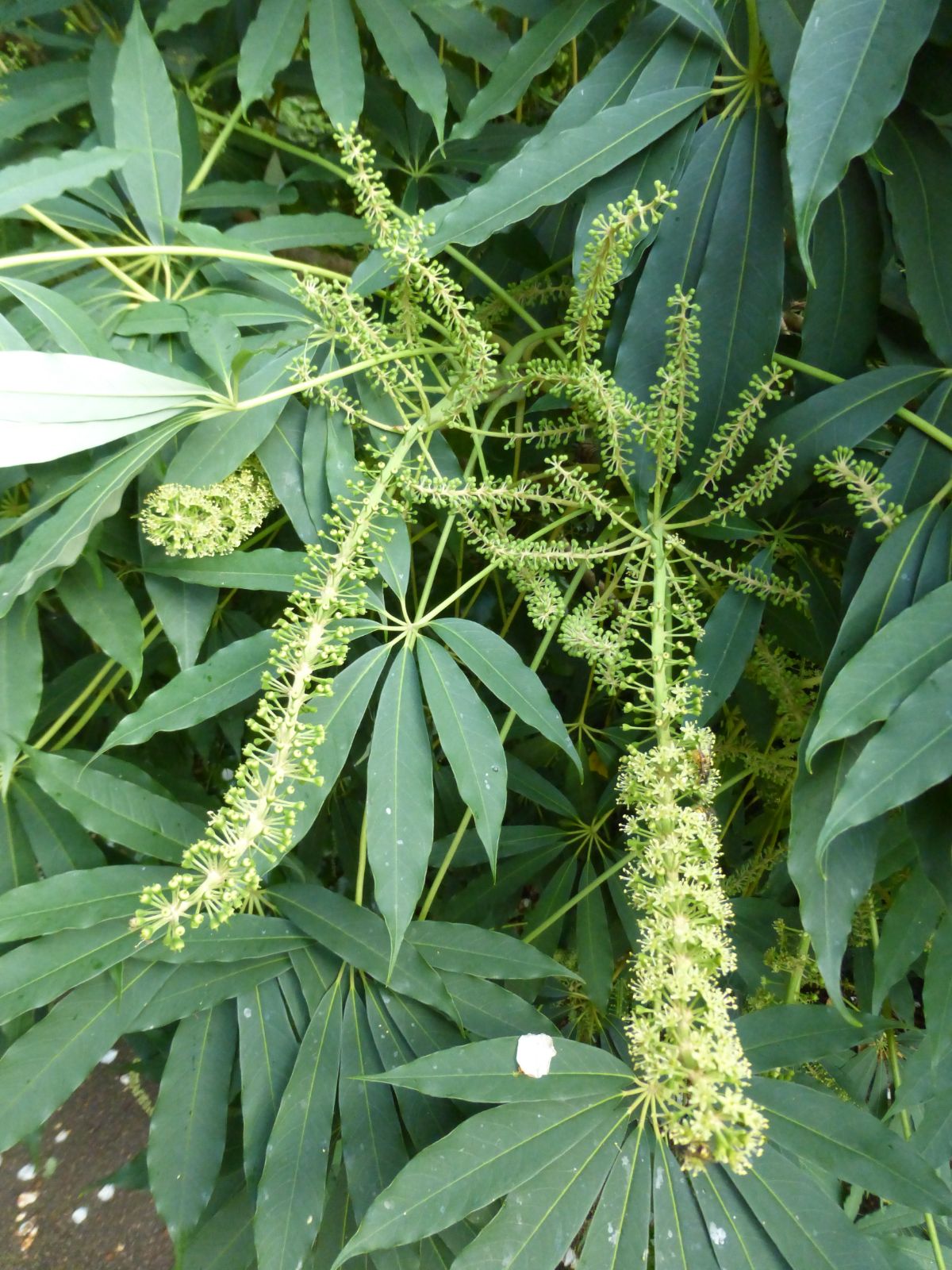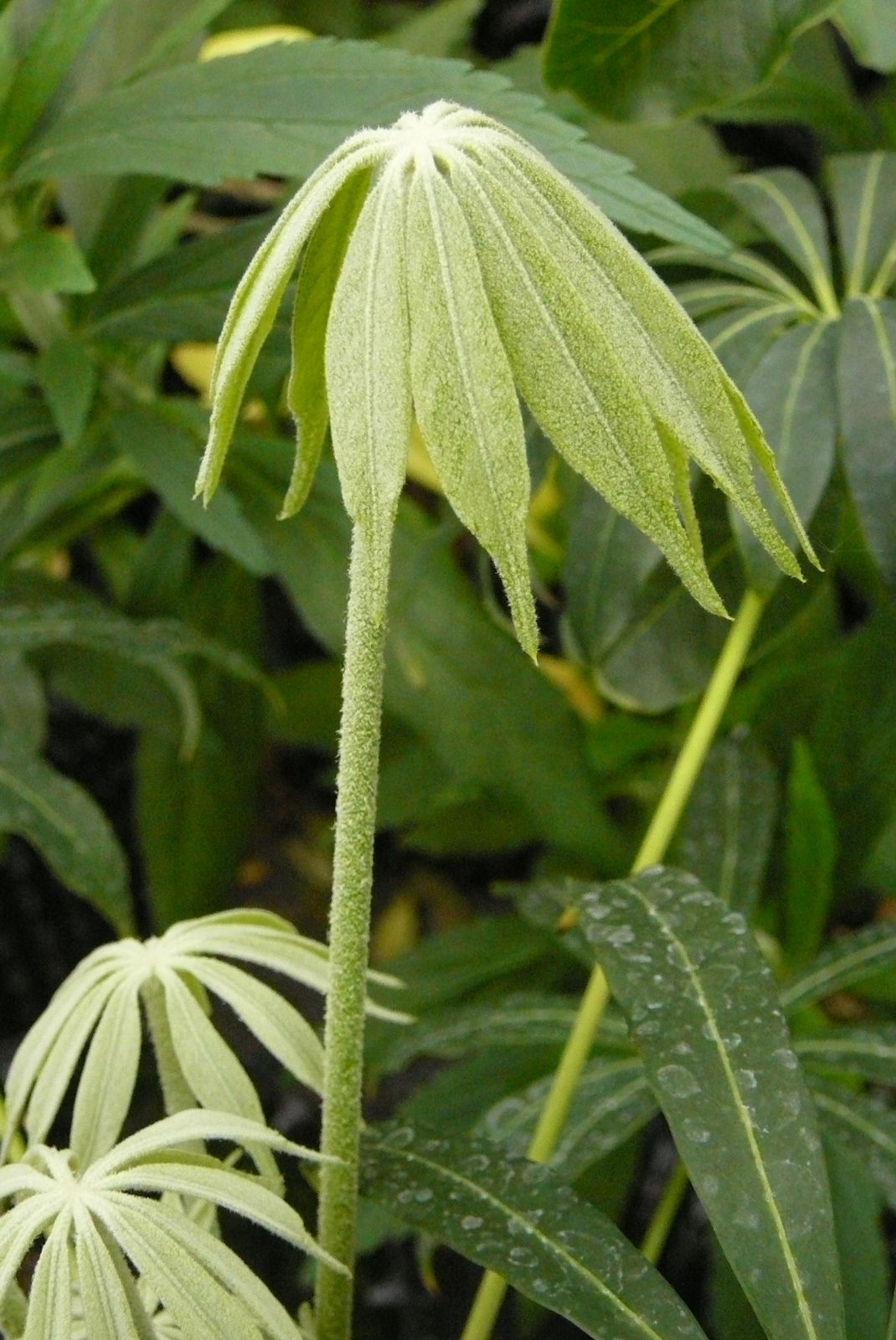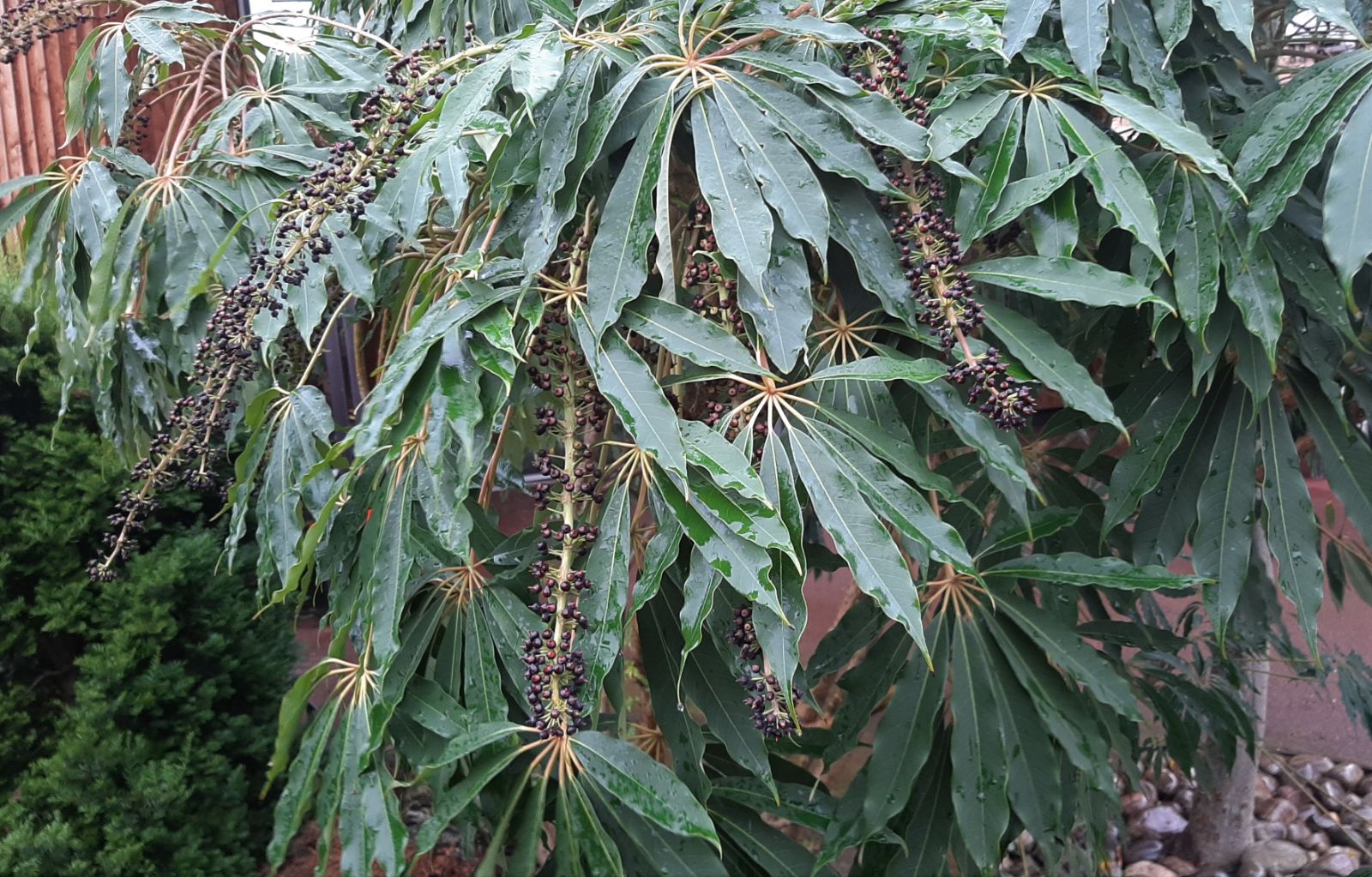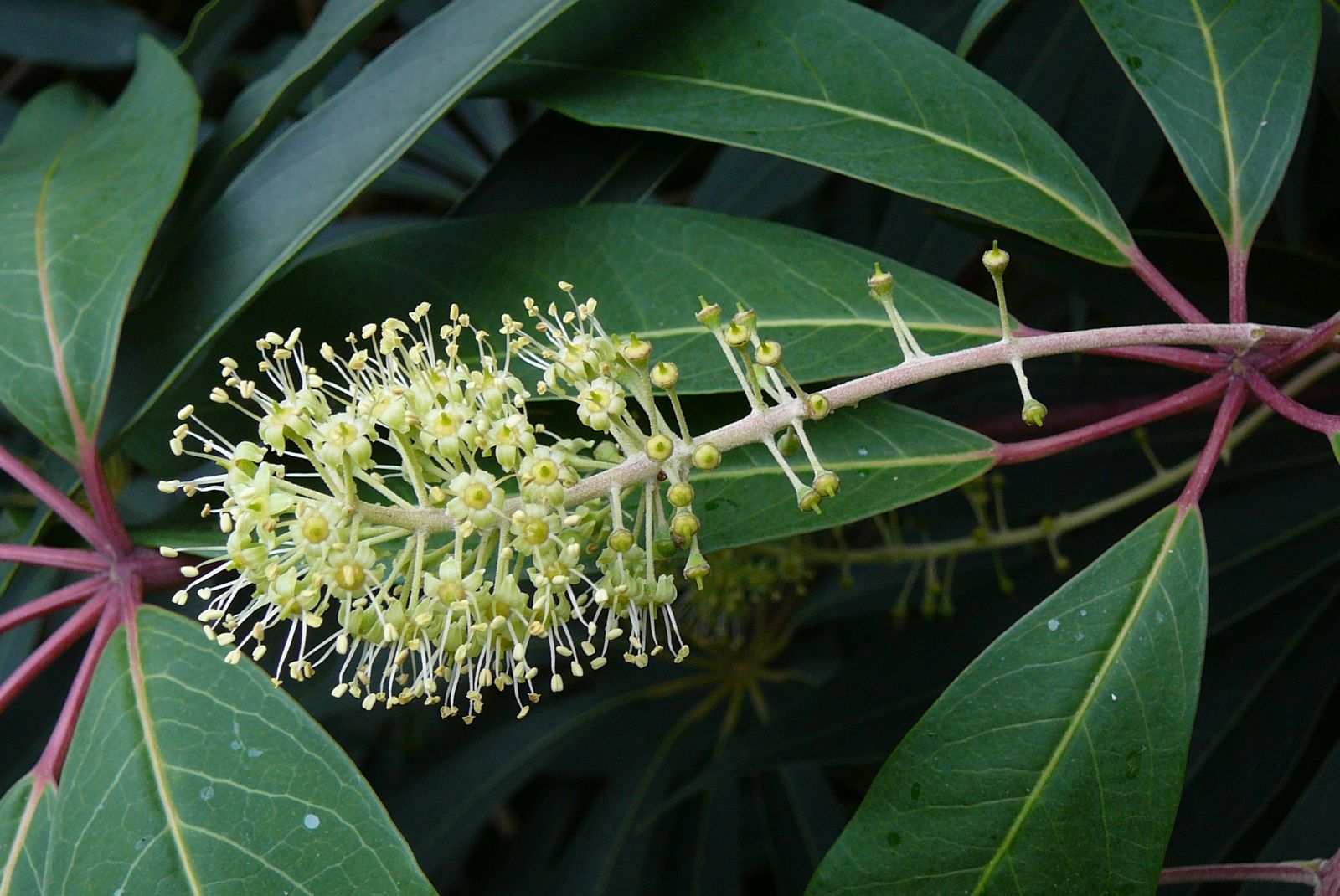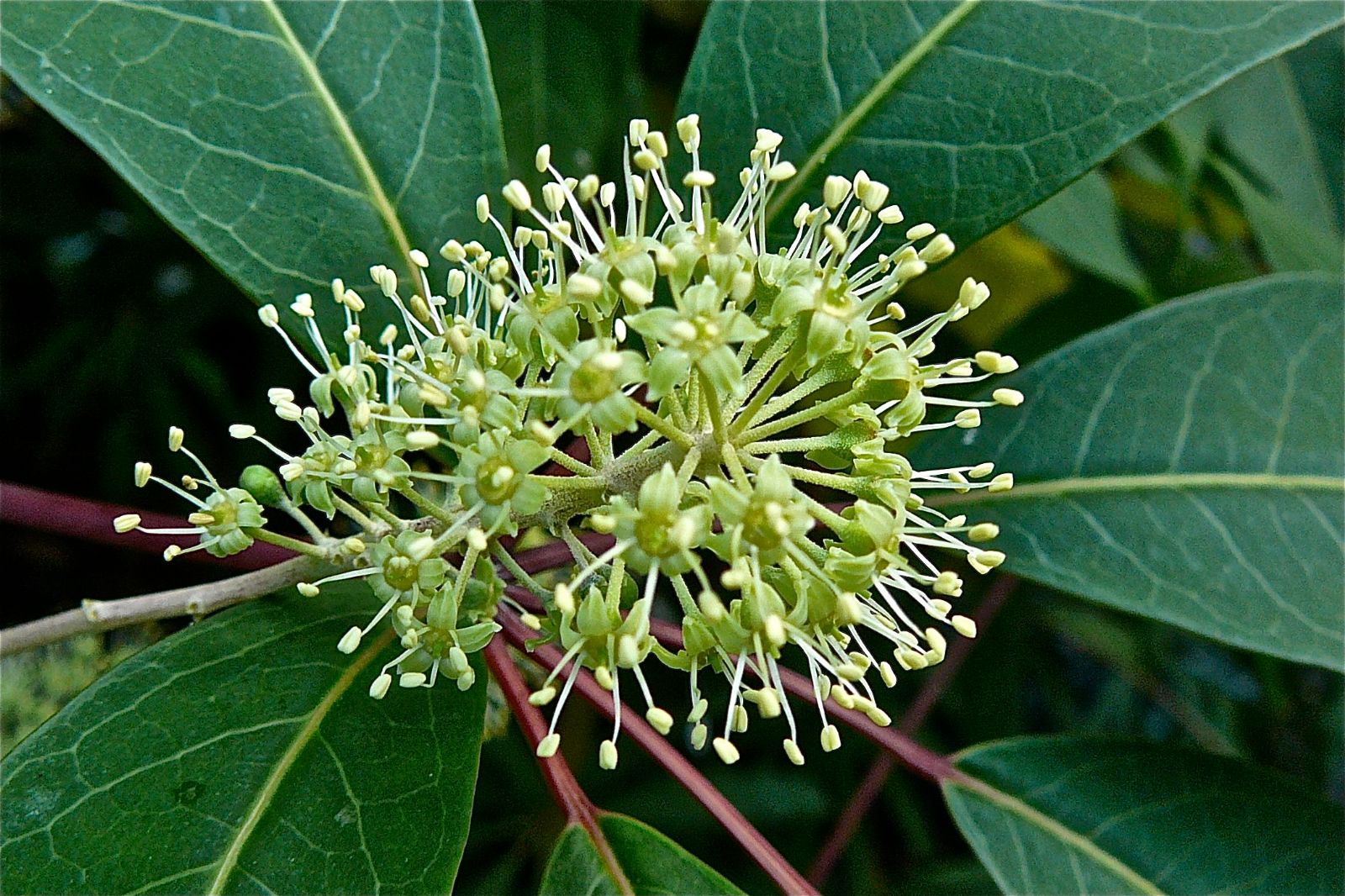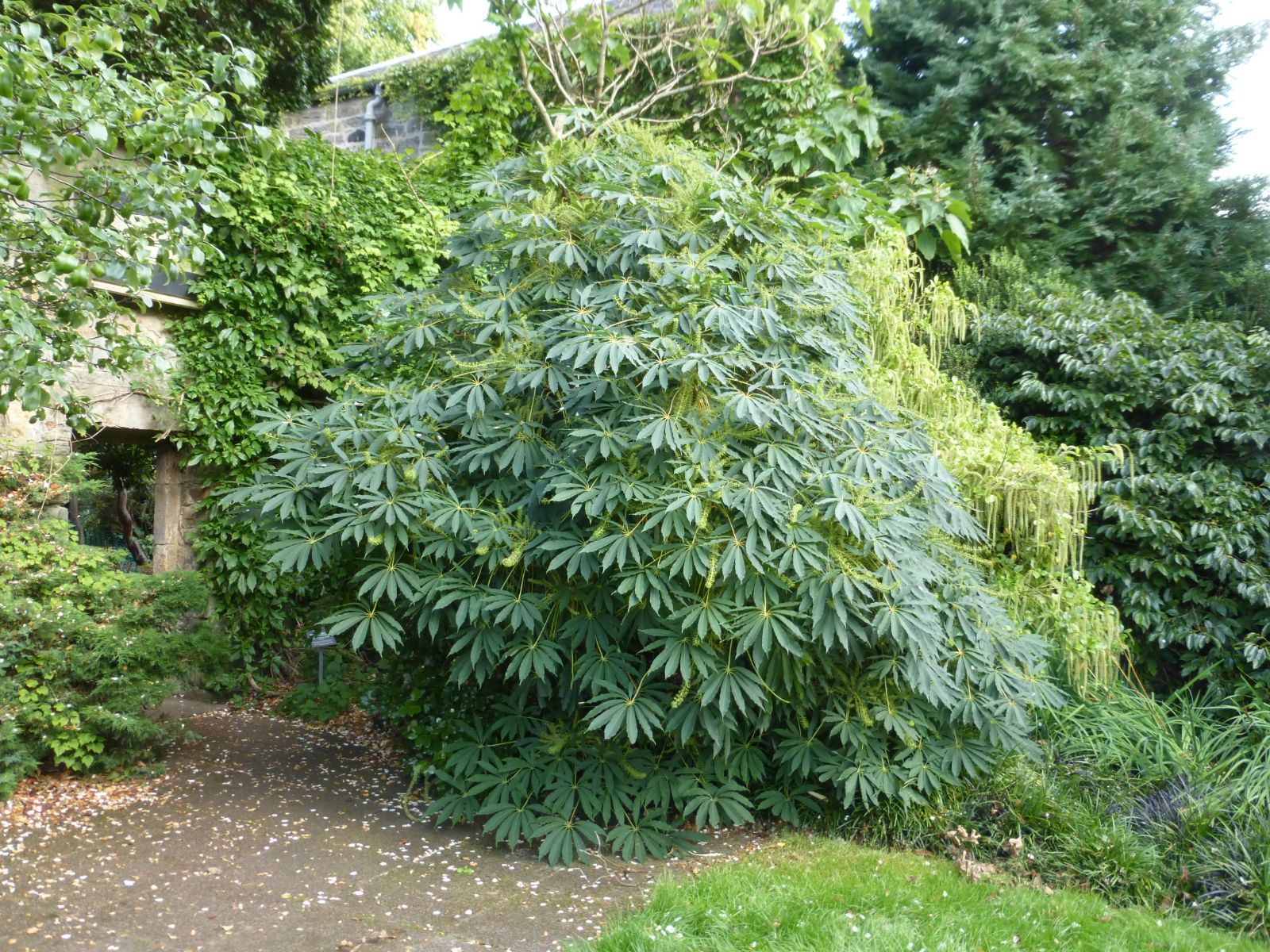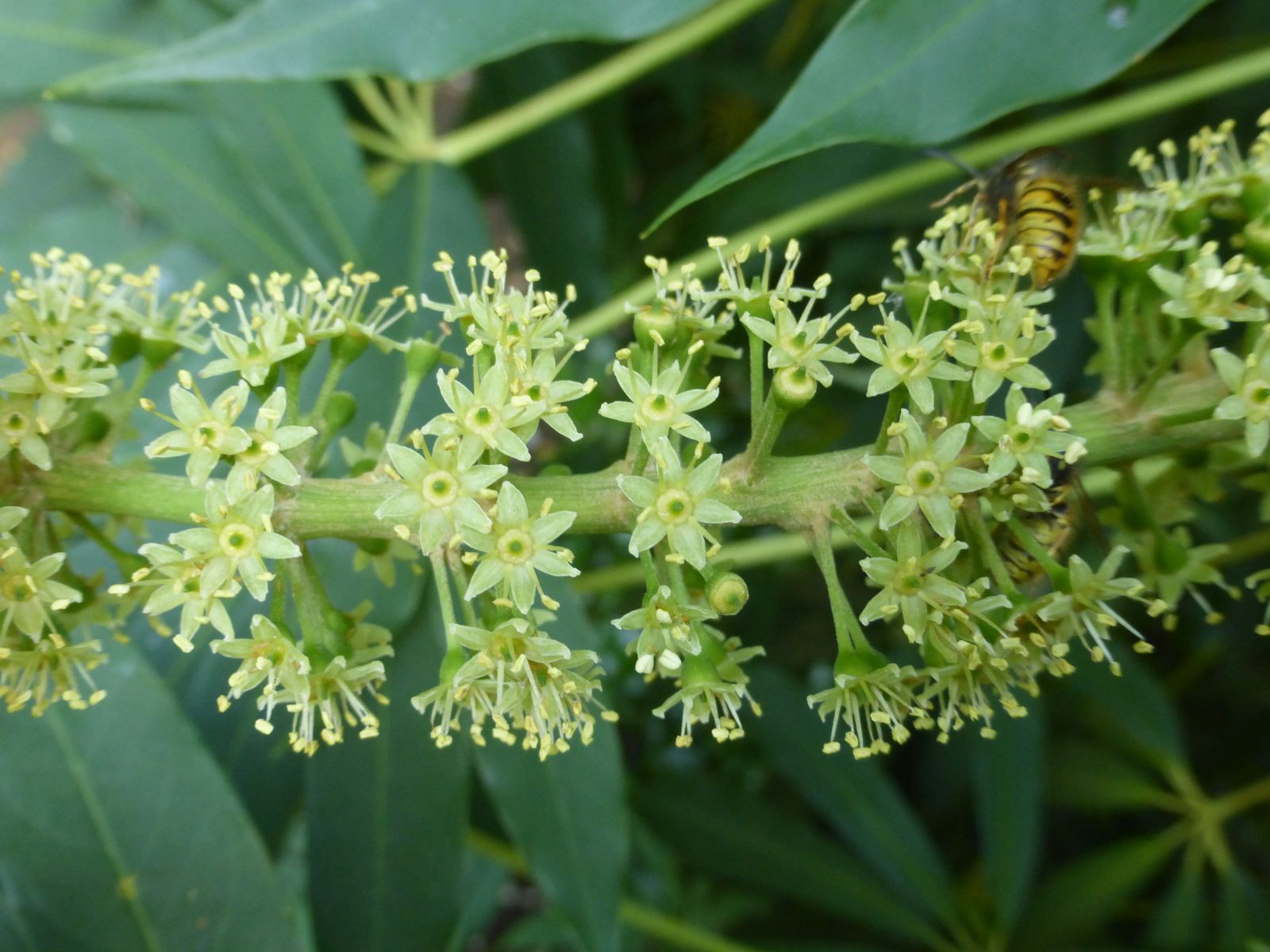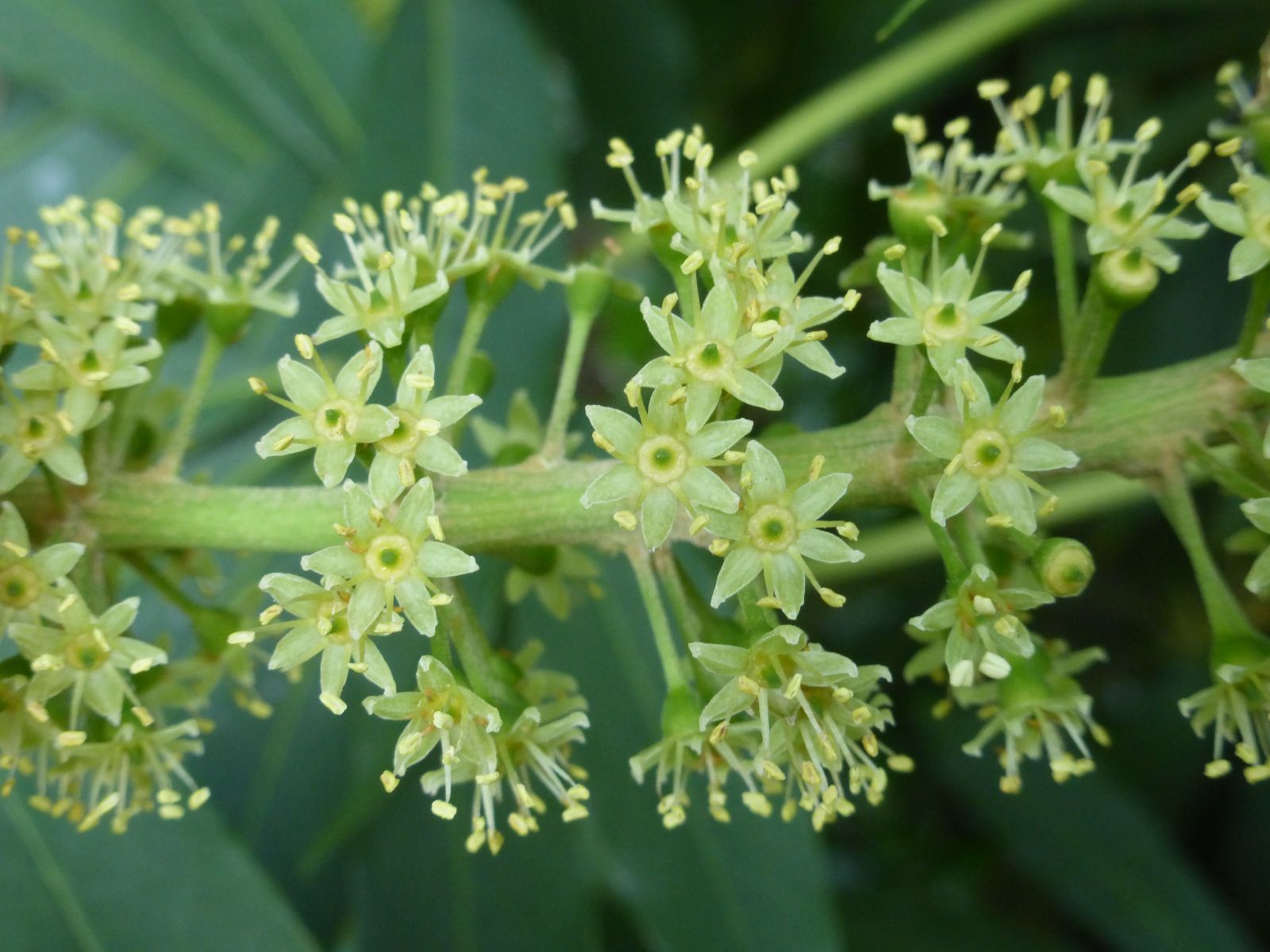Schefflera taiwaniana
Credits
Article from New Trees by John Grimshaw & Ross Bayton
Recommended citation
'Schefflera taiwaniana' from the website Trees and Shrubs Online (treesandshrubsonline.
Genus
Shrub or tree 2–4 m. Leaves evergreen, palmate; leaflets four to nine, papery, (5–)10–15 × (1.5–)2.5–5 cm, narrowly ovate or oblong, both surfaces glabrous, five to seven pairs of secondary veins on each side of the midrib, though largely obscured, margins entire, apex acuminate; petiole glabrous, 10–25 cm long, green to red. Inflorescences terminal, paniculate, primary axis to 25(–30) cm long, sparsely pubescent; composed of numerous racemes or umbels, each with up to six flowers. Flowers small; calyx six-toothed, petals six, stamens six. Drupe globose, 0.5–0.7 cm diameter, with a persistent style. Flowering August to October, fruiting October to November (Taiwan). Ohashi 1993, Xiang & Lowry 2006. Distribution TAIWAN. Habitat Scattered in coniferous forest, between 2000 and 2850 m asl. USDA Hardiness Zone 8–9. Conservation status Lower Risk. Illustration Wynn-Jones 2005; NT781. Taxonomic note An almost identical taxon in Assam, Myanmar and Yunnan is distinguished as S. shweliensis W.W. Sm.
Schefflera taiwaniana is one of the most significant plant introductions of recent years, and certainly the most valuable of the genus in terms of general garden usefulness and adaptability. While its foliage is not as large as that of some of the others, it makes up for this in the elegance of its pose and the many leaflets. In each new shoot the dark green leaves are held outwards on petioles of diminishing length so that they overlap like tiles on a roof; in spring the new growth erupts above them in pale green, with each leaflet furled downwards. It eventually forms a short, branching, small tree that develops a broad, rounded canopy, but it is attractive at all ages. In the garden it is supremely adaptable, bringing tremendous architectural structure to a planting. Judicious trimming will keep it in shape if space is limited. Where it will grow, there is some danger of it becoming as ubiquitous as Fatsia japonica (Thunb.) Decne & Planch. – but S. taiwaniana will always be much more beautiful.
The species was first collected by Edward Needham in the early 1990s (T. Hudson, pers. comm. 2008) and this stock has proved to be a great success, in Cornwall and elsewhere, forming good bushy plants to 3 m or more in height. It is particularly elegant, with longer, slightly more undulate leaflets than found in some more recent collections. The majority of stock available in commerce, however, has been distributed from Crûg Farm from gatherings made in Taiwan from 1993 onwards (BSWJ 3575, BSWJ 7096, RWJ 10000, RWJ 10016, RWJ 10064). Of these, RWJ 10016 is the collection from the highest altitude, found at just under 3000 m on Yushan in 2003 – but whatever the altitude of origin, cultivated material of S. taiwaniana all seems to be equally hardy. The species is very variable in many respects, some plants even retaining juvenile lobing into adulthood. It also shows variation in the degree to which it branches from the base, the higher-altitude collections such as RWJ 10016 being most likely to do so. At Crûg Farm it has grown outside for more than 12 years with no problems and fruits heavily, and it is showing equal toughness wherever it has been planted in the United Kingdom (B. Wynn-Jones, pers. comm. 2008). Although doing very well in the Pacific Northwest it (like other scheffleras) is a failure in the southeastern United States, apparently not liking the heat and humidity in summer (D. Hinkley, T. Avent, pers. comms. 2008).

